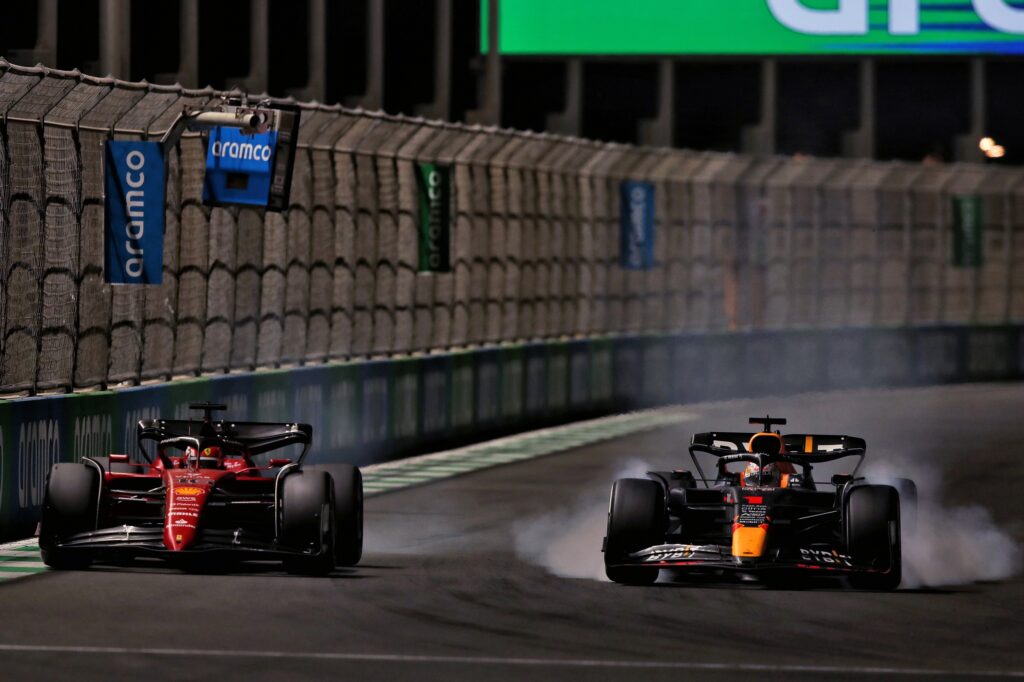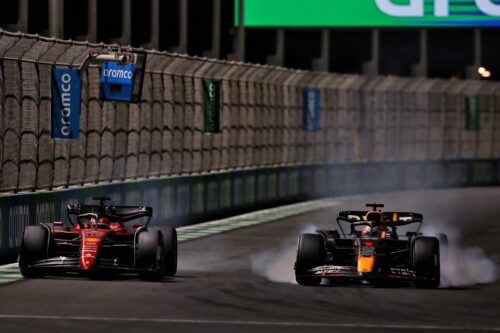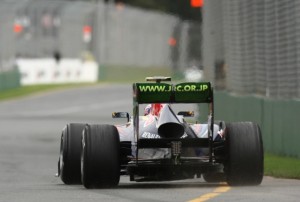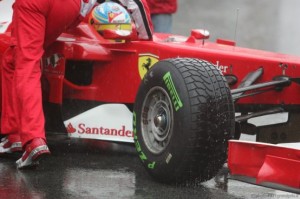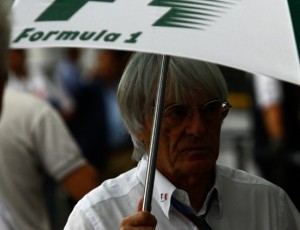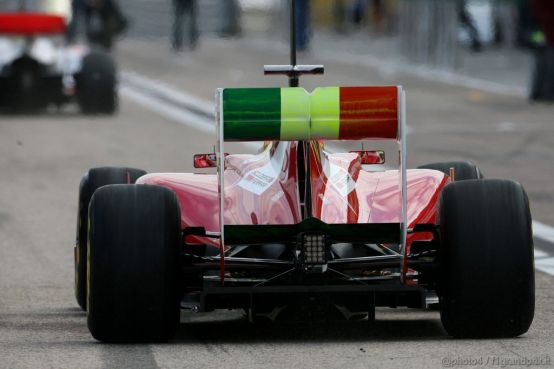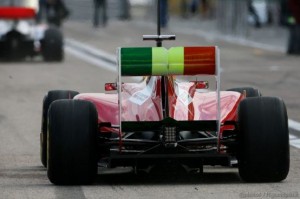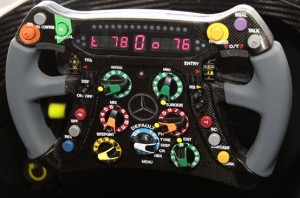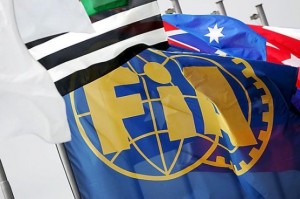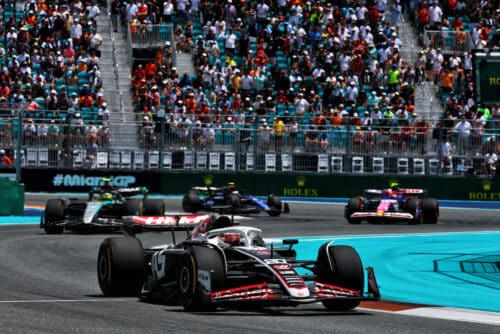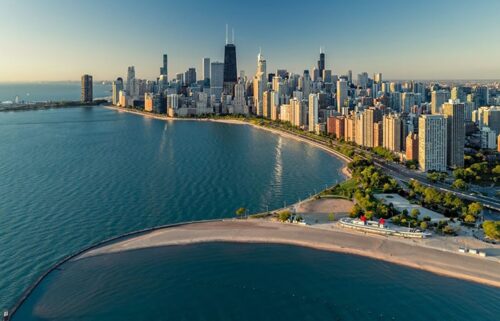How to return to a more credible F1? Let's try to imagine it

The failure to start the 2011 World Cup in Bahrain is definitely hurting.
Lately, moreover, Bernie Ecclestone's outbursts have also been creating a certain embarrassment in the environment. The latest releases of the master father of F1 are astounding: paths watered like flower gardens, cars that should go back to twenty from twenty-four because some are too slow (Come on?), and then others, too many proposals and suggestions that it would be better not to even hear.
But if it were just that: the whole of F1 is taking a turn that we don't like. Not so much to those who command it (who pockets the money) but to those who see it and would like to see it more interesting.
We undertake, with this piece, to 'review' the F1 system, and hypothesize both substantial and marginal changes that could, in our opinion, bring back some vigor to our favorite sport.
Let's begin.
PROBLEM NUMBER ONE: TRAILING
The FIA continues to go around it, inventing for at least ten years all sorts of useless rules which, systematically, do not solve the problem.
The aerodynamic disturbance suffered by a car in front is the key problem of this F1. We'll keep saying it until we drop. And this effect is greatly accentuated when approaching and traveling around curves. In this regard, we bring to mind three episodes:
- Turkey 2006: Fernando Alonso (at the time with Renault) and Michael Schumacher (in his last year at Ferrari) battle for second position. The German approaches regularly in the first corners of the Istanbul track up to the famous turn 8, a long 'multi-bend' to the left to be joined in support. Well, and the scene repeats itself for several laps, precisely in that corner (which we can define as the only true one on the entire track) and only in that one Schumacher is unable to keep up with the Renault and loses at least half a second. And if he tries to stay closer he completely loses load on the front to the point of risking going off the track.
- Hungary 2010: Rubens Barrichello, with new tires just fitted, overtakes Schumacher's Mercedes at a rate of 2,5/3 seconds per lap. It will take him six laps to overtake him, and to do so he will have to invent the maneuver we know. We repeat, six laps to overtake a single-seater with worn tires and a pace worthy of a car to be lapped.
- Abu Dhabi 2010: of course, the set-up of Alonso's Ferrari was suicidal (too loaded), but not being able to overtake Petrov's Renault for half the race despite desperate attempts gives you an idea of how these cars don't even make it easier to get close to your opponents.
The first step to take, therefore, would be to impose by regulation flat bottoms, extractors and appendages that do not so clearly dirty the air flow received by those following, so as to allow the rider to remain in the wake as much as possible, even when cornering at high speeds, to exploit the following straights.
ELECTRONICS AND VIDEOGAME STEERING WHEELS? NO THANK YOU
Step number two. We had already talked about it in this article. Electronics are definitely dominating too much. It is not possible to have steering wheels that require hours of study to understand. This year we will reach an unthinkable number of buttons and cuffs. You no longer have to be pilots, but real engineers. And this is NOT GOOD. Some protagonists have already complained about the fact that too much time is spent adjusting this, that, that, resulting in distracted driving. But now we are saturated with it. Kers, Ala Mobile, differential, brake distribution, radio, straw, engine mapping, starting procedures, engine rpm. In short. A PC connected to the steering. EVERYTHING AWAY.
Our idea of a steering wheel is:
– Display with on-board information with related controls
– Sequential gearbox (we allow this)
– Crazy
- Radio
– Command to drink from the water bottle.
STOP. No possibility of regulating the engine rpm, the braking distribution and all the devilry provided by the current on-board computers. Any starting procedure has been eliminated. You want to see the smoking wheels at the start.
TIRE QUESTION: ENOUGH INDECISIONS
In 1994, supplies were reintroduced to move (fictitiously among other things) the races. It was said that there would be more overtaking. Overtaking has been evident for 15 years. Not on the track, but in the pits. Why risk ending up outside, when in four laps the one in front of me comes back in? Let's stay behind...
Year 2010, supplies are eliminated. Yes, we finally see some more overtaking (thanks, Kobayashi!). It's still not good, and here's the clever trick from 2011. We ask, they think of the FIA, Pirelli to create tires that don't last more than 15/20 laps. Whether they are hard, soft, medium, it doesn't matter. You have to melt just looking at them. No sooner said than done. This year each driver will have to stop at least three times at the GP to change tyres. But how, were the supplies removed because there was too much overtaking in the pits, and now the drivers are still being forced to return 3, 4 times per race? With the risk of punctures and more. And where do we put this unknown security?
After 11 years (1998-2009) we went back from grooved to slick (which at least are nice to look at), but in order not to lose the habit of ruining things beforehand, the obligation to use both compounds was imposed by the competing supplier. So, if a team is terribly penalized by one of the two compounds, it still has to make an extra change (even for five laps, say) to fit the other specification.
What do we think? REVOLUTION here too. First of all two compounds:
– One, defined as Soft, with which it is not possible to cover the entire race (but not even 15 laps as we will see this year), but which performs better than the other compound.
– One, defined as Hard, inferior in performance to the Soft, but with the possibility of covering a large part of the race, at least 3/4 without problems.
No obligation to fit both compounds during the race. No obligation to stop. It is at the discretion of the team or driver to remain on the track for the entire race with the hard tires even if finished, to do a final stint with the soft ones or to run only with the soft tires and perhaps an extra stop, evaluating the gain on the single lap compared to to opponents.
RACE WEEKEND
The structure of the race weekend has seen numerous changes over the last decade. We currently have 3 hours of free practice on Friday divided into two shifts (morning-afternoon), a one-hour shift on Saturday morning and qualifying in the afternoon, in the form of Q1, Q2, Q3.
Our idea is the following:
– Return to Friday qualifying and modification of the qualifying structure, both for Friday and Saturday. No longer Q1, Q2, Q3, but a return to the past. Or the Flying Lap. 5 fast laps available to each driver within an hour (considering launch and return laps we are talking about 15 laps). To overcome the problem which, you will remember, saw the Bigs only enter the track in the last half hour, they were obliged to complete at least two of these five fast laps within the first half hour, under penalty of losing three timed laps. In the series, either you go out even in the first half hour, or you can only do two fast laps against the others' five.
– The half-hour Sunday morning Warm Up also returns: the possibility of finding that spark or idea that can change the direction of a bad qualifying
– No more Parc Fermé and the impossibility of working on the machines between Saturday and Sunday.
That said, the Weekend would go like this:
Friday: A two-hour shift in the morning in which the third drivers can also run, if desired, and a first qualifying session in the afternoon.
Saturday: Another two-hour shift in the morning (always possibility to run for the third drivers) and qualifying in the afternoon. We start from Friday times.
Sunday: Half an hour warm-up in the morning. Race at 14pm LOCAL, or directly in the evening. No more races at sunset, which only create discomfort for the pilots due to decreasing visibility.
COSTS AND TESTS
The FIA has been pushing for cost reduction for some years, only to then contradict itself with the introduction of devices such as KERS.
The drastic reduction in testing is absurd. In this way, it was thought that the performance of the cars could be leveled even further. The result is that the economically strongest teams have built exceptional simulators at home capable of faithfully reproducing tracks from all over the world. The smaller stables remained at a standstill. Furthermore, the reduction in testing forces the teams to test the new components directly on Friday morning, which is not a great thing in terms of safety. Remember the Buemi suspension explosion in China last year?
Our proposal is to return to collective testing during the year, but in an 'intelligent' version. Are we talking about cost reduction? Excellent, group tests are organised, every 4 races, in the two days following a GP, on the same track. No extra costs for transporting the material (the teams are already there..), you only have extra costs for accommodation and track rentals. But we exploit the ground where we have already run.
STOP ENGINE FREEZING
Research in F1 has always lived on the edge of the balance between performance and reliability. Remember the 2005 season? A very strong but unreliable Mclaren against a slower but more resistant Renault. But it was a hard-fought season. With the freezing of the engines, the general reliability of the single-seaters has increased a lot, and it is really difficult to see engines in smoke, certainly much more so than 10 or 15 years ago. Our idea is to return to the liberalization of engine development. We are not technicians but we also hypothesize a return to different displacements. Freedom, in short. But with an eye on consumption.
SCORES: THE 25 POINTS A MIRROR FOR LARKS
In 2010 the new MotoGP-style scoring system debuted, with 25 points for the winner, 18 for second place and 15 for third. Away, everyone else. Making due proportions, not much has changed compared to the 10 point era. Only the ninth and tenth placed were also rewarded, and it was therefore decided to raise all the other scores. But, fundamentally, nothing has changed. It's just more difficult for fans to decipher the real gaps between the various drivers.
ESCAPE ROUTES? ALMOST AVENUE
We already talked about it in July last year. Anyone who sets a trajectory badly and goes off the track now loses practically nothing. At Abu Dhabi 2010, Alonso in an attempt to overtake Petrov repeatedly exceeded the limits of the track. If instead of the asphalt there had also been a 4 meter strip of grass or gravel, he would probably have lost his position to Webber.
What we want to say is: safety is certainly important, God forbid. However, we must set limits. If the driver is aware that he can go off the track without wasting too much time, he is led to push even harder. It becomes an 'inner' security. Why, precisely, not place a 4/5 meter ribbon of grass or sand between the white line of the runway and the asphalt escape route, which would still cause a waste of time for the pilots? These should recalculate their limit knowing, however, that in case of serious exits they would be helped to slow down by the asphalt.
INSANE TRACKS
We talked about this precisely on the occasion of the cancellation of the Bahrain GP We are inundated with Tilkodromes. Kilometers of straights and tremendous braking in which to display the sponsors on the sides of the single-seaters. It would be so nice to be able to go back to racing on historic tracks, where you can still feel the passion and where people come in large numbers. Do we dream too much?
UNWATCHABLE SINGLE SEATERS
This is a decidedly marginal and absolutely aesthetic element. But let us tell you. These F1s, since 2009, are unwatchable. Ungainly, with these snowplows at the front and clotheslines at the rear. Was it thought that increasing the size of the front wing and decreasing the size of the rear wing would help overtaking? No advantage, in fact now you can't even look at them. Usually, after a year you keep an eye out for certain changes. But look at the cover photo, deliberately taken from the 2008 season. Wasn't it a completely different story? Ok eliminate all the appendages, but give us back the old wings!
BACK TO 2011
We have already commented on the rear movable wing. The return of Kers is indifferent. The only teams that won't use him will be the small ones, so the disadvantage will be all theirs. Furthermore, it is the application (about 7 seconds max per lap) that leaves something to be desired. This way everyone will use it on the longest straight, with some exceptions. The Pirelli tyres, as we read from the tests, cause some concern. They last too little, and the trains available in a weekend for each driver are still the same compared to 2010: 6 of hard tyres, 5 of soft, 4 of intermediate and 3 of heavy wet tyres. Therefore you will also have to take into account the savings on tyres. You won't have to risk throwing away a set of tires only to end up without them in the race. We'll see how it goes, but the conditions don't seem positive at the moment.
CONCLUSION
With this small review we have explored different areas of F1, which in our opinion would be simple to review to return to fully enjoying a somewhat obscure sport. Currently, the 'Todt government' appears not to have completely changed direction compared to the Mosley period. Who knows if anything will change. Let's hope, at least.
Alessandro Secchi
F1Grandprix.it
if you want to always be updated on our news
Follow us here
